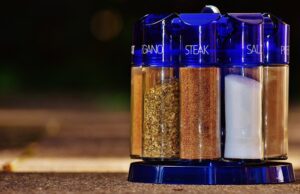
How often do you declutter your fridge?
The average family wastes hundreds of dollars a year on discarded food. Bread goes mouldy on benchtops. Bananas turn black while we promise to make banana bread tomorrow.
And in the back of fridges unnoticed and uneaten, leftovers, condiments and open packs of cheese turn nasty.
Declutter your fridge – why
- To reduce waste and landfill by using what you have.
- To maintain food safety.
- To find what you need quickly.
- To delight in an aesthetically appealing fridge.
Declutter your fridge – how
Clearing out your fridge is a similar process to decluttering any area. It goes like this. (1) empty it (2) discard unwanted items (3) wipe the shelves (4) return the keepers. Read on for further detail.
- Take everything out and lay it on the bench or floor.
- Discard inedible items, try to compost if possible.
- Wipe the shelves with warm water. I use a little bucket with a squirt of dish detergent. Some fridge parts may be removable, making a quick soak a more effective cleaning option. Be gone, onion skin and sticky jam remnants!
- If you haven’t already – categorise what remains, into basic groups. For example, dairy, condiments, fruit, vegetables etc. Try to fit condiments on the fridge doors. That way the shelves can be saved for bulkier things like meals and leftovers.
During the decluttering process, consider discarding rarely-used condiments. Do you really need four types of soy sauce? Can you consolidate them into one?
Alternatively, commit to making a meal of spaghetti, curry or something equally forgiving, to make use of ageing items like small amounts of condiments, slightly limp carrots, wilting herbs and remnants of cheese.
Food storage tips
The refrigerator doors and top shelf are the warmest, while the middle and bottom shelves get progressively colder. So ideally you should store:
– condiments in the doors
– cheese on the upper shelves
– leftovers, milk and meat down below
– fruit and vegetables in the crisper.
That’s how your fridge is designed. Milk on the doors is not ideal for longevity. But it fits there so darn nicely, so it’s a bit of a trade-off depending on your preferences.
Vegetables keep better in containers like the Tupperware Ventsmart. If your budget is tight there are cheaper options. Alternatively, you can line your bag or container with paper towel or dish cloths to absorb moisture. I used to have a tiny fridge with no room for containers, and this hack was a life-saver.
Store drippy, meaty things in two bags and a container or bowl, and put them at the bottom of the fridge.
To minimise landfill, skip the cling wrap for leftovers and re-use produce bags, stick a plate on top or pop the leftovers in without a cover.
Do you know that most fruits produce a gas that makes vegetables turn nasty? So it’s a great idea to separate fruits from veggies. Fortunately most fridges have two crispers – yay! If you want to take it up a notch, divide further so you don’t have your posh shiitake mushrooms fraternising with iceberg lettuce.
Make the most perishable items the most visible so they are used. Out of sight, out of mind.
Label leftovers with the date and contents.
You can research beautiful colour coding concepts for your fridge contents. This might help you find what you need, and it looks pretty cute in the meantime.
There are some terrific ideas online for lining up items in clear tubs. Similar to decanting pantry items into clear bins, it’s an aesthetically appealing concept but not completely necessary and may just be more plastic you don’t need. If it helps you with better access and waste minimisation however, go for it.
Similar to the idea of throwing all questionable items into one pasta or curry meal, have a ‘scrounge night’ once a week and warm up leftovers to get it into bellies. Supplement with carbs, hunks of cheese and raw veggies as necessary to fool your housemates into thinking you have put effort into a colourful, well-rounded meal. My kids love scrounge night, sometimes rebranded as ‘bits and pieces’, ‘picnic plates’ and ‘poke bowls’.
Check the fridge before you go to the supermarket. I have heard of fridges with cameras so you can view your household stock while swanning down the aisles of Coles. But if you don’t have that luxury, peek inside before you go.
Declutter your fridge regularly to minimise waste of food and money.
You can use the same concept to declutter your freezer.
Ready, settie, declutter!






























